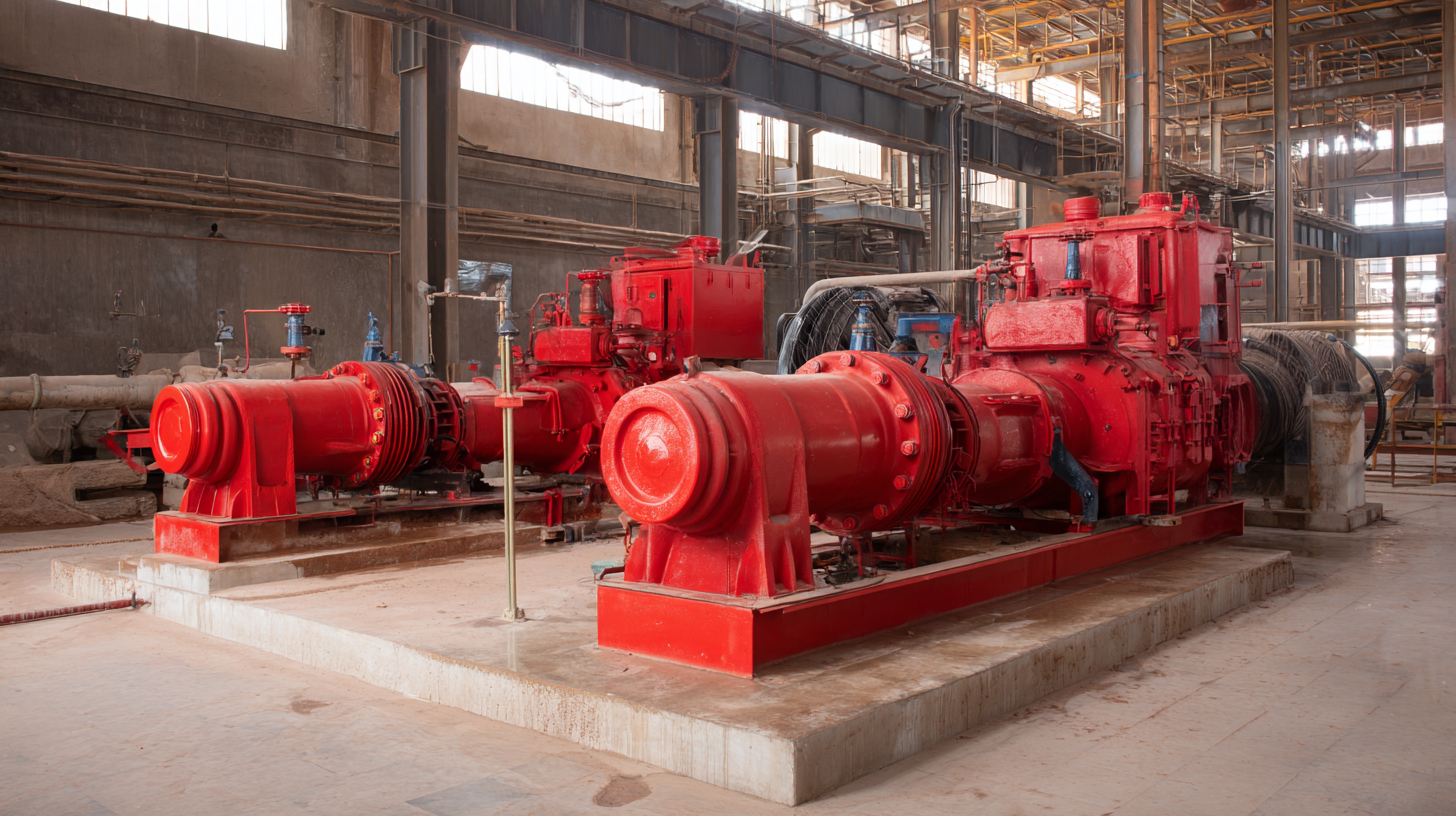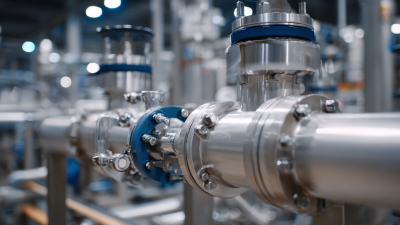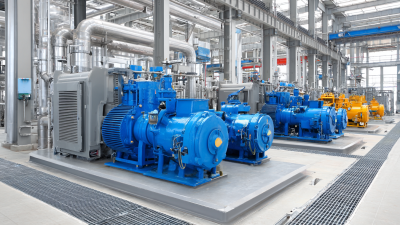
Universal Pumping | High Pressure Pumps
High Pressure Pumps for Difficult to Pump Slurry, Sludge, and Food Waste.
Selecting the right feed pump is crucial for optimizing system performance and ensuring efficient operation in various applications. Feed pumps play a vital role in transferring fluids within processes, and their efficiency ratings and performance metrics are fundamental considerations in this selection process. An effective feed pump not only enhances operational reliability but also contributes to energy savings and reduced operational costs.

In this guide, we will explore key factors to consider when choosing a feed pump, including understanding efficiency ratings, evaluating performance metrics, and assessing the specific needs of your system. By making informed decisions based on these criteria, you can ensure that your feed pump will perform optimally, providing the necessary flow and pressure while minimizing waste and maximizing productivity.
When selecting the right feed pump, understanding efficiency ratings is crucial, especially in specialized environments like net zero energy buildings designed for poultry production. These buildings demand not only high-performance equipment but also components that contribute to overall energy efficiency. The relevance of feed pump efficiency ratings blossoms in this context, as it directly impacts both operational costs and environmental sustainability.
Tips for selecting an efficient feed pump include evaluating the performance metrics that matter most to your specific application. Look for models that provide data on power consumption relative to their output — this shows how well a pump converts energy into movement without wasting resources. Additionally, consider the materials and designs that enhance the durability and reliability of the pump, particularly in rigorous agricultural settings.
Another essential aspect is the balance between safety and performance. When systems must maintain water supplies for poultry effectively, ensuring that pumps not only operate efficiently but also minimize risks of failure is paramount. Always assess both manufacturer specifications and real-world performance feedback to make an informed choice tailored to enhance productivity and meet energy standards.
| Pump Model | Efficiency Rating (%) | Max Flow Rate (GPM) | Max Head (ft) | Power Consumption (HP) | Applications |
|---|---|---|---|---|---|
| Model A | 85 | 100 | 150 | 10 | Irrigation |
| Model B | 90 | 120 | 200 | 15 | Industrial |
| Model C | 88 | 150 | 180 | 12 | Agricultural |
| Model D | 87 | 90 | 160 | 11 | Mining |
| Model E | 92 | 110 | 170 | 14 | Municipal Water |
When selecting a feed pump, it’s crucial to consider key performance metrics to ensure optimal operation and reliability. Start by evaluating the pump's efficiency rating, which typically ranges from 50% to 90%. According to the Hydraulic Institute, a 1% increase in efficiency can lead to significant energy savings, making it a vital factor in your selection process. Additionally, take into account the pump's flow rate, pressure rating, and the compatibility with the fluid being pumped. It’s essential to match these metrics with your application requirements to avoid costly downtimes and ensure long-term functionality.
**Tips:** When assessing the flow rate, always consider the pump's Best Efficiency Point (BEP) as it indicates the flow at which the pump operates most effectively. Furthermore, look for models that provide performance curves, which offer valuable insights for understanding how the pump will behave under different operating conditions.
Another critical metric is the Net Positive Suction Head (NPSH), which prevents cavitation—a common issue that can severely damage pumps. The required NPSH should be lower than the available NPSH from your system conditions for optimal performance. A 2019 study by ASME cited that improper NPSH considerations could lead to a five-fold increase in maintenance costs due to cavitation-related failures. Hence, reliability in service and installation should never be overlooked.
When selecting a feed pump, efficiency ratings and performance metrics play crucial roles in ensuring optimal operation for specific applications. Different types of feed pumps, such as centrifugal, positive displacement, and gear pumps, offer distinct advantages and disadvantages based on their design and operational features. For instance, centrifugal pumps are known for their efficiency in high-flow applications but may struggle with viscosity variations. In contrast, positive displacement pumps excel in handling viscous fluids but can be less efficient at high flow rates.

Performance metrics, such as flow rate, pressure, and energy consumption, further aid in the comparison of these pumps. Understanding the specific requirements of your application allows for better choices; for example, if a consistent flow rate is critical, a positive displacement pump might be preferable despite its lower efficiency in certain scenarios. Additionally, energy efficiency ratings can highlight the long-term operational costs associated with each type, guiding users toward pumps that minimize energy consumption while meeting performance demands. By carefully considering these factors, one can select the most appropriate feed pump that balances efficiency and functionality.
When selecting the right feed pump for H2 production, evaluating manufacturer specifications is crucial for ensuring optimal performance. Efficiency ratings, defined by metrics such as energy consumption and flow rate, should be the primary focus. According to recent studies, feed pumps can account for up to 30% of overall energy usage in hydrogen production systems, highlighting the importance of selecting a pump that balances high efficiency with operational demand. Industry benchmarks indicate that pumps with efficiency ratings above 85% can significantly reduce operational costs over time, providing manufacturers a strong return on investment.
In addition to efficiency ratings, performance metrics such as pressure capability and maintenance requirements must be assessed. For example, a study reviewing various pump models found that those designed with advanced materials and innovative technologies exhibited a 15% increase in longevity and reduced downtime. Moreover, integrating data analytics into the performance evaluation process allows manufacturers to predict performance based on historical data, leading to improved reliability and sustained operational excellence. This strategic approach not only maximizes production efficiency but also aligns with the industry's shift towards sustainability and reduced environmental impact.
This chart illustrates the efficiency ratings of various feed pumps. Higher efficiency ratings indicate better performance, making it easier for manufacturers and engineers to select the right pump for their specific needs.
When selecting the right feed pump, conducting a cost-benefit analysis based on performance metrics is crucial. Efficiency ratings can significantly impact the total cost of ownership, as seen in recent studies indicating that high-efficiency systems can reduce energy consumption by up to 52%. Evaluating both energy efficiency and the economic implications allows for more informed decisions, particularly in sectors like residential heating where decarbonization is imperative.
Tips: Consider the long-term operational costs when assessing pump performance. Systems with higher initial costs may ultimately prove more economical through energy savings. Additionally, exploring newer technologies, such as hybrid pump systems, can offer improved efficiency while addressing thermal imbalance concerns in conventional designs.
Furthermore, leveraging studies that utilize advanced methodologies, such as sensitivity analysis or the Taguchi method, can provide insights into optimizing performance and energy efficiency. These approaches can help in understanding the impacts of various operational strategies and modifications on pump characteristics, ultimately leading to smarter investment choices in feed pump systems.







Universal Pumping
625 Apache Trail
Woodstock, GA 30189
Mon - Fri | 9:00 AM - 5:00 PM
Universal Pumping is staffed with industry professionals with 20-45 years experience with high pressure pumping systems. We represent only the “elite producers” in pump manufacturing: Britain’s EMS and Germany’s EMMERICH. Our engineering and manufacturing approach is conservative, and we do not use “guess work” in the design or sales of our pumping and filtration equipment.



